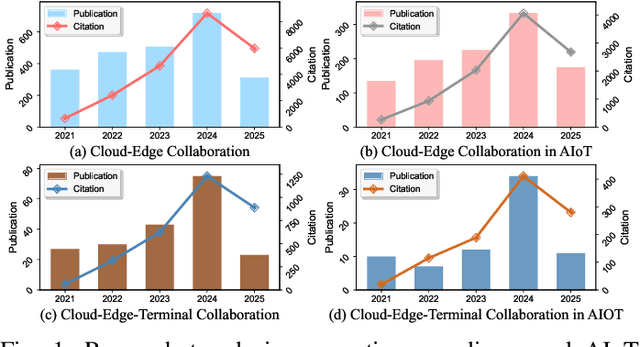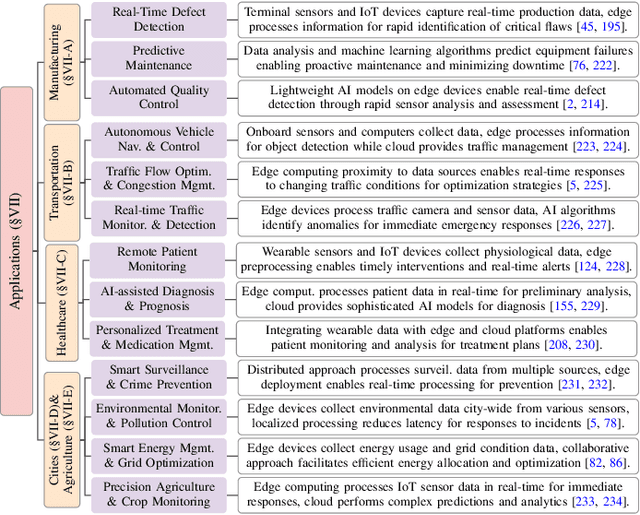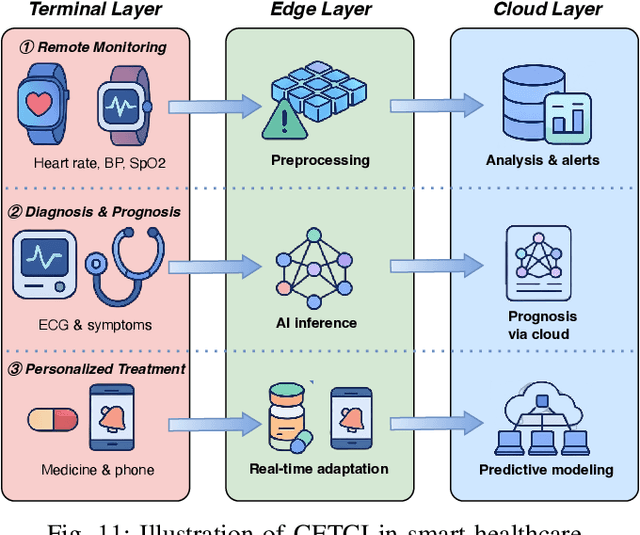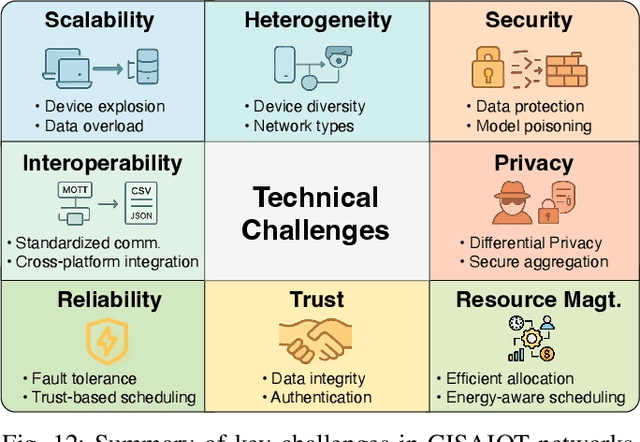Jiaqi Wu
Few Shot Semi-Supervised Learning for Abnormal Stop Detection from Sparse GPS Trajectories
Oct 14, 2025Abstract:Abnormal stop detection (ASD) in intercity coach transportation is critical for ensuring passenger safety, operational reliability, and regulatory compliance. However, two key challenges hinder ASD effectiveness: sparse GPS trajectories, which obscure short or unauthorized stops, and limited labeled data, which restricts supervised learning. Existing methods often assume dense sampling or regular movement patterns, limiting their applicability. To address data sparsity, we propose a Sparsity-Aware Segmentation (SAS) method that adaptively defines segment boundaries based on local spatial-temporal density. Building upon these segments, we introduce three domain-specific indicators to capture abnormal stop behaviors. To further mitigate the impact of sparsity, we develop Locally Temporal-Indicator Guided Adjustment (LTIGA), which smooths these indicators via local similarity graphs. To overcome label scarcity, we construct a spatial-temporal graph where each segment is a node with LTIGA-refined features. We apply label propagation to expand weak supervision across the graph, followed by a GCN to learn relational patterns. A final self-training module incorporates high-confidence pseudo-labels to iteratively improve predictions. Experiments on real-world coach data show an AUC of 0.854 and AP of 0.866 using only 10 labeled instances, outperforming prior methods. The code and dataset are publicly available at \href{https://github.com/pangjunbiao/Abnormal-Stop-Detection-SSL.git}
Distribution Preference Optimization: A Fine-grained Perspective for LLM Unlearning
Oct 06, 2025Abstract:As Large Language Models (LLMs) demonstrate remarkable capabilities learned from vast corpora, concerns regarding data privacy and safety are receiving increasing attention. LLM unlearning, which aims to remove the influence of specific data while preserving overall model utility, is becoming an important research area. One of the mainstream unlearning classes is optimization-based methods, which achieve forgetting directly through fine-tuning, exemplified by Negative Preference Optimization (NPO). However, NPO's effectiveness is limited by its inherent lack of explicit positive preference signals. Attempts to introduce such signals by constructing preferred responses often necessitate domain-specific knowledge or well-designed prompts, fundamentally restricting their generalizability. In this paper, we shift the focus to the distribution-level, directly targeting the next-token probability distribution instead of entire responses, and derive a novel unlearning algorithm termed \textbf{Di}stribution \textbf{P}reference \textbf{O}ptimization (DiPO). We show that the requisite preference distribution pairs for DiPO, which are distributions over the model's output tokens, can be constructed by selectively amplifying or suppressing the model's high-confidence output logits, thereby effectively overcoming NPO's limitations. We theoretically prove the consistency of DiPO's loss function with the desired unlearning direction. Extensive experiments demonstrate that DiPO achieves a strong trade-off between model utility and forget quality. Notably, DiPO attains the highest forget quality on the TOFU benchmark, and maintains leading scalability and sustainability in utility preservation on the MUSE benchmark.
A Survey on Cloud-Edge-Terminal Collaborative Intelligence in AIoT Networks
Aug 26, 2025



Abstract:The proliferation of Internet of things (IoT) devices in smart cities, transportation, healthcare, and industrial applications, coupled with the explosive growth of AI-driven services, has increased demands for efficient distributed computing architectures and networks, driving cloud-edge-terminal collaborative intelligence (CETCI) as a fundamental paradigm within the artificial intelligence of things (AIoT) community. With advancements in deep learning, large language models (LLMs), and edge computing, CETCI has made significant progress with emerging AIoT applications, moving beyond isolated layer optimization to deployable collaborative intelligence systems for AIoT (CISAIOT), a practical research focus in AI, distributed computing, and communications. This survey describes foundational architectures, enabling technologies, and scenarios of CETCI paradigms, offering a tutorial-style review for CISAIOT beginners. We systematically analyze architectural components spanning cloud, edge, and terminal layers, examining core technologies including network virtualization, container orchestration, and software-defined networking, while presenting categorizations of collaboration paradigms that cover task offloading, resource allocation, and optimization across heterogeneous infrastructures. Furthermore, we explain intelligent collaboration learning frameworks by reviewing advances in federated learning, distributed deep learning, edge-cloud model evolution, and reinforcement learning-based methods. Finally, we discuss challenges (e.g., scalability, heterogeneity, interoperability) and future trends (e.g., 6G+, agents, quantum computing, digital twin), highlighting how integration of distributed computing and communication can address open issues and guide development of robust, efficient, and secure collaborative AIoT systems.
Score-based Generative Diffusion Models to Synthesize Full-dose FDG Brain PET from MRI in Epilepsy Patients
Jun 12, 2025Abstract:Fluorodeoxyglucose (FDG) PET to evaluate patients with epilepsy is one of the most common applications for simultaneous PET/MRI, given the need to image both brain structure and metabolism, but is suboptimal due to the radiation dose in this young population. Little work has been done synthesizing diagnostic quality PET images from MRI data or MRI data with ultralow-dose PET using advanced generative AI methods, such as diffusion models, with attention to clinical evaluations tailored for the epilepsy population. Here we compared the performance of diffusion- and non-diffusion-based deep learning models for the MRI-to-PET image translation task for epilepsy imaging using simultaneous PET/MRI in 52 subjects (40 train/2 validate/10 hold-out test). We tested three different models: 2 score-based generative diffusion models (SGM-Karras Diffusion [SGM-KD] and SGM-variance preserving [SGM-VP]) and a Transformer-Unet. We report results on standard image processing metrics as well as clinically relevant metrics, including congruency measures (Congruence Index and Congruency Mean Absolute Error) that assess hemispheric metabolic asymmetry, which is a key part of the clinical analysis of these images. The SGM-KD produced the best qualitative and quantitative results when synthesizing PET purely from T1w and T2 FLAIR images with the least mean absolute error in whole-brain specific uptake value ratio (SUVR) and highest intraclass correlation coefficient. When 1% low-dose PET images are included in the inputs, all models improve significantly and are interchangeable for quantitative performance and visual quality. In summary, SGMs hold great potential for pure MRI-to-PET translation, while all 3 model types can synthesize full-dose FDG-PET accurately using MRI and ultralow-dose PET.
Reinforcement Fine-Tuning Powers Reasoning Capability of Multimodal Large Language Models
May 24, 2025Abstract:Standing in 2025, at a critical juncture in the pursuit of Artificial General Intelligence (AGI), reinforcement fine-tuning (RFT) has demonstrated significant potential in enhancing the reasoning capability of large language models (LLMs) and has led to the development of cutting-edge AI models such as OpenAI-o1 and DeepSeek-R1. Moreover, the efficient application of RFT to enhance the reasoning capability of multimodal large language models (MLLMs) has attracted widespread attention from the community. In this position paper, we argue that reinforcement fine-tuning powers the reasoning capability of multimodal large language models. To begin with, we provide a detailed introduction to the fundamental background knowledge that researchers interested in this field should be familiar with. Furthermore, we meticulously summarize the improvements of RFT in powering reasoning capability of MLLMs into five key points: diverse modalities, diverse tasks and domains, better training algorithms, abundant benchmarks and thriving engineering frameworks. Finally, we propose five promising directions for future research that the community might consider. We hope that this position paper will provide valuable insights to the community at this pivotal stage in the advancement toward AGI. Summary of works done on RFT for MLLMs is available at https://github.com/Sun-Haoyuan23/Awesome-RL-based-Reasoning-MLLMs.
Uncertainty-aware Long-tailed Weights Model the Utility of Pseudo-labels for Semi-supervised Learning
Mar 13, 2025Abstract:Current Semi-supervised Learning (SSL) adopts the pseudo-labeling strategy and further filters pseudo-labels based on confidence thresholds. However, this mechanism has notable drawbacks: 1) setting the reasonable threshold is an open problem which significantly influences the selection of the high-quality pseudo-labels; and 2) deep models often exhibit the over-confidence phenomenon which makes the confidence value an unreliable indicator for assessing the quality of pseudo-labels due to the scarcity of labeled data. In this paper, we propose an Uncertainty-aware Ensemble Structure (UES) to assess the utility of pseudo-labels for unlabeled samples. We further model the utility of pseudo-labels as long-tailed weights to avoid the open problem of setting the threshold. Concretely, the advantage of the long-tailed weights ensures that even unreliable pseudo-labels still contribute to enhancing the model's robustness. Besides, UES is lightweight and architecture-agnostic, easily extending to various computer vision tasks, including classification and regression. Experimental results demonstrate that combining the proposed method with DualPose leads to a 3.47% improvement in Percentage of Correct Keypoints (PCK) on the Sniffing dataset with 100 data points (30 labeled), a 7.29\% improvement in PCK on the FLIC dataset with 100 data points (50 labeled), and a 3.91% improvement in PCK on the LSP dataset with 200 data points (100 labeled). Furthermore, when combined with FixMatch, the proposed method achieves a 0.2% accuracy improvement on the CIFAR-10 dataset with 40 labeled data points and a 0.26% accuracy improvement on the CIFAR-100 dataset with 400 labeled data points.
CLIP-Optimized Multimodal Image Enhancement via ISP-CNN Fusion for Coal Mine IoVT under Uneven Illumination
Feb 26, 2025Abstract:Clear monitoring images are crucial for the safe operation of coal mine Internet of Video Things (IoVT) systems. However, low illumination and uneven brightness in underground environments significantly degrade image quality, posing challenges for enhancement methods that often rely on difficult-to-obtain paired reference images. Additionally, there is a trade-off between enhancement performance and computational efficiency on edge devices within IoVT systems.To address these issues, we propose a multimodal image enhancement method tailored for coal mine IoVT, utilizing an ISP-CNN fusion architecture optimized for uneven illumination. This two-stage strategy combines global enhancement with detail optimization, effectively improving image quality, especially in poorly lit areas. A CLIP-based multimodal iterative optimization allows for unsupervised training of the enhancement algorithm. By integrating traditional image signal processing (ISP) with convolutional neural networks (CNN), our approach reduces computational complexity while maintaining high performance, making it suitable for real-time deployment on edge devices.Experimental results demonstrate that our method effectively mitigates uneven brightness and enhances key image quality metrics, with PSNR improvements of 2.9%-4.9%, SSIM by 4.3%-11.4%, and VIF by 4.9%-17.8% compared to seven state-of-the-art algorithms. Simulated coal mine monitoring scenarios validate our method's ability to balance performance and computational demands, facilitating real-time enhancement and supporting safer mining operations.
SafeInt: Shielding Large Language Models from Jailbreak Attacks via Safety-Aware Representation Intervention
Feb 21, 2025Abstract:With the widespread real-world deployment of large language models (LLMs), ensuring their behavior complies with safety standards has become crucial. Jailbreak attacks exploit vulnerabilities in LLMs to induce undesirable behavior, posing a significant threat to LLM safety. Previous defenses often fail to achieve both effectiveness and efficiency simultaneously. Defenses from a representation perspective offer new insights, but existing interventions cannot dynamically adjust representations based on the harmfulness of the queries. To address this limitation while ensuring both effectiveness and efficiency, we propose SafeIntervention (SafeInt), a novel defense method that shields LLMs from jailbreak attacks through safety-aware representation intervention. SafeInt is built on our analysis of the representations of jailbreak samples. It adjusts representation distributions of jailbreak samples through intervention to align them with the representations of unsafe samples while minimizing unnecessary perturbations to jailbreak-irrelevant representations. We conduct comprehensive experiments covering six jailbreak attacks, two jailbreak datasets, and two utility benchmarks. Experimental results demonstrate that SafeInt outperforms all baselines in defending LLMs against jailbreak attacks while largely maintaining utility. Additionally, we evaluate SafeInt against adaptive attacks and verify its effectiveness in mitigating real-time attacks.
Efficient Detection Framework Adaptation for Edge Computing: A Plug-and-play Neural Network Toolbox Enabling Edge Deployment
Dec 24, 2024Abstract:Edge computing has emerged as a key paradigm for deploying deep learning-based object detection in time-sensitive scenarios. However, existing edge detection methods face challenges: 1) difficulty balancing detection precision with lightweight models, 2) limited adaptability of generalized deployment designs, and 3) insufficient real-world validation. To address these issues, we propose the Edge Detection Toolbox (ED-TOOLBOX), which utilizes generalizable plug-and-play components to adapt object detection models for edge environments. Specifically, we introduce a lightweight Reparameterized Dynamic Convolutional Network (Rep-DConvNet) featuring weighted multi-shape convolutional branches to enhance detection performance. Additionally, we design a Sparse Cross-Attention (SC-A) network with a localized-mapping-assisted self-attention mechanism, enabling a well-crafted joint module for adaptive feature transfer. For real-world applications, we incorporate an Efficient Head into the YOLO framework to accelerate edge model optimization. To demonstrate practical impact, we identify a gap in helmet detection -- overlooking band fastening, a critical safety factor -- and create the Helmet Band Detection Dataset (HBDD). Using ED-TOOLBOX-optimized models, we address this real-world task. Extensive experiments validate the effectiveness of ED-TOOLBOX, with edge detection models outperforming six state-of-the-art methods in visual surveillance simulations, achieving real-time and accurate performance. These results highlight ED-TOOLBOX as a superior solution for edge object detection.
FedDTPT: Federated Discrete and Transferable Prompt Tuning for Black-Box Large Language Models
Nov 01, 2024Abstract:In recent years, large language models (LLMs) have significantly advanced the field of natural language processing (NLP). By fine-tuning LLMs with data from specific scenarios, these foundation models can better adapt to various downstream tasks. However, the fine-tuning process poses privacy leakage risks, particularly in centralized data processing scenarios. To address user privacy concerns, federated learning (FL) has been introduced to mitigate the risks associated with centralized data collection from multiple sources. Nevertheless, the privacy of LLMs themselves is equally critical, as potential malicious attacks challenge their security, an issue that has received limited attention in current research. Consequently, establishing a trusted multi-party model fine-tuning environment is essential. Additionally, the local deployment of large LLMs incurs significant storage costs and high computational demands. To address these challenges, we propose for the first time a federated discrete and transferable prompt tuning, namely FedDTPT, for black-box large language models. In the client optimization phase, we adopt a token-level discrete prompt optimization method that leverages a feedback loop based on prediction accuracy to drive gradient-free prompt optimization through the MLM API. For server optimization, we employ an attention mechanism based on semantic similarity to filter all local prompt tokens, along with an embedding distance elbow detection and DBSCAN clustering strategy to enhance the filtering process. Experimental results demonstrate that, compared to state-of-the-art methods, our approach achieves higher accuracy, reduced communication overhead, and robustness to non-iid data in a black-box setting. Moreover, the optimized prompts are transferable.
 Add to Chrome
Add to Chrome Add to Firefox
Add to Firefox Add to Edge
Add to Edge